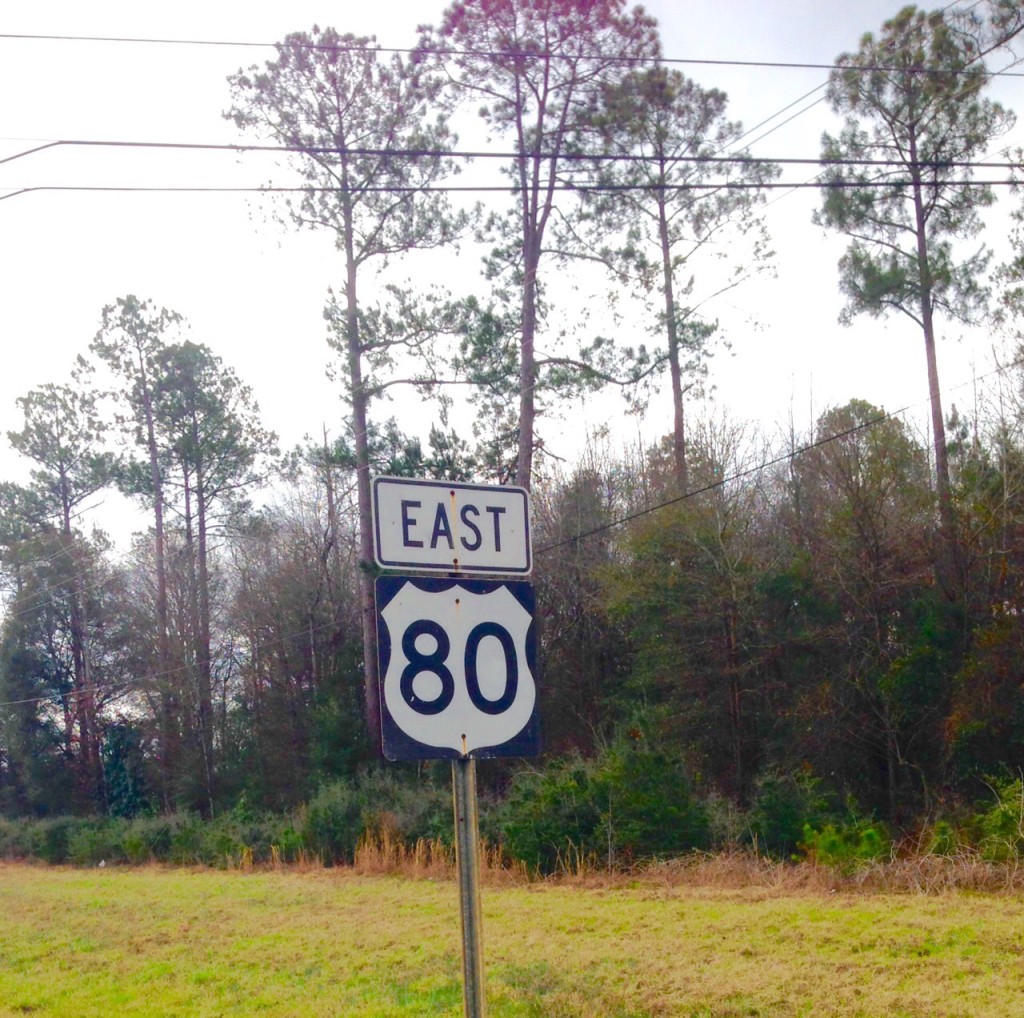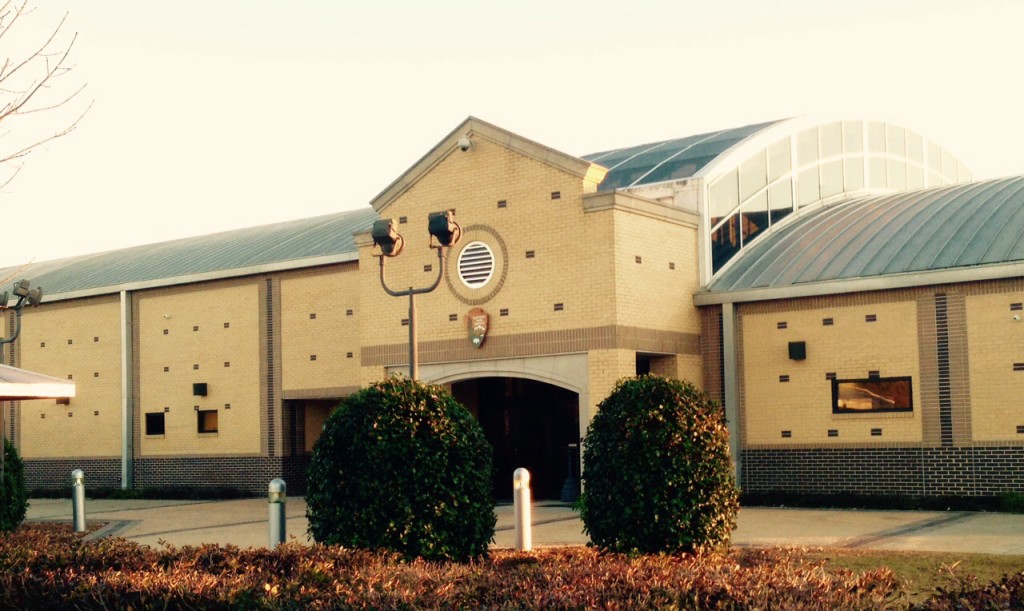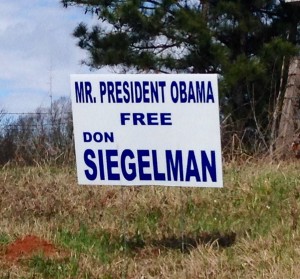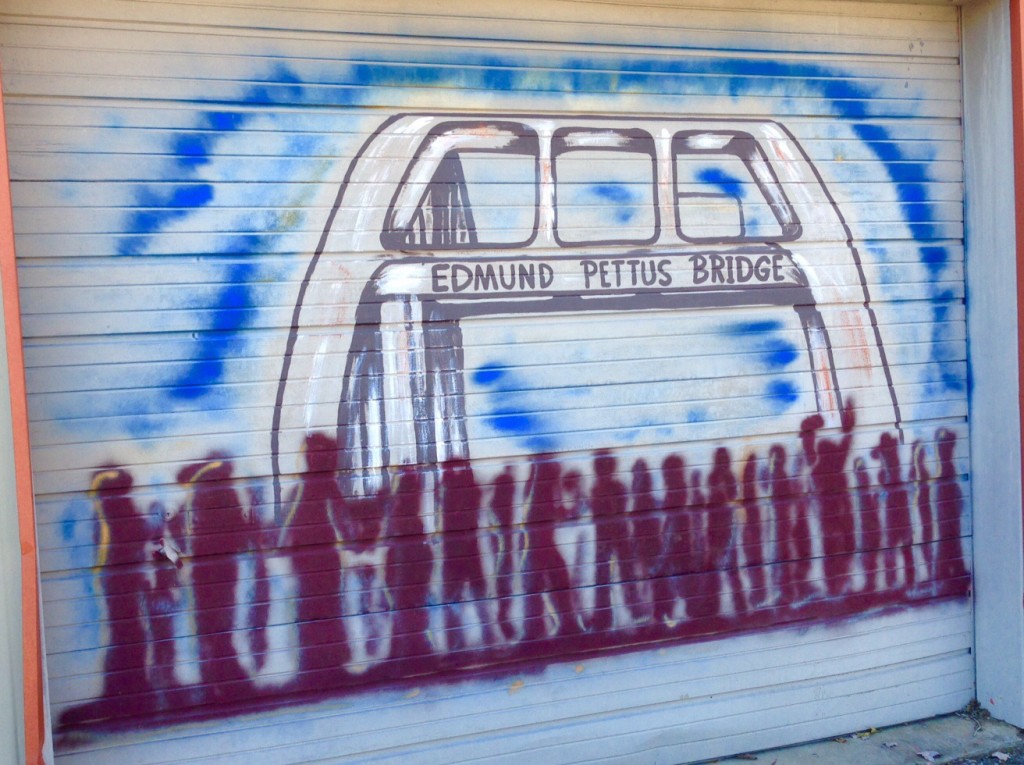On the Dangerous Road to Selma
This morning I drove west on U.S. 80, across rural Lowndes County.

There’s not much to see here: cattle ranches have largely replaced cotton; there are stretches of swampland here and there; and about the only “industry” visible from the roadway are two buildings, either quite large bingo parlors or quite small casinos, take your pick.

In 1965, Lowndes was 80% black! But not a single person of color was registered to vote. Meanwhile, more than 100% of whites were on the rolls. (I never got a good explanation for the 100+% white registration; but I heard rumors about active cemeteries, and what now sounds like a “Walking Dead” prequel . . .. .) The more widely-accepted story was that the last black person who tried to register didn’t make it home alive.
These numbers and stories had a lot to do with why the U.S. army was tasked with escort duty for the marchers on this route. At several places today, I passed squads of prisoners, in bright vests, picking up trash along the shoulders.– a sure sign that Company Is Coming.
There are several “historic site” signs along the way, most marking places where the marchers camped for the night. The marchers from Selma trekked the other direction, east toward Montgomery. One marker is different: it marks the place where Viola Liuzzo, driving back to Selma from the closing rally at the state Capitol, was shot dead by Klansmen who chased her car in the night.

Today, a few miles farther west, the National Park Service has built an Interpretive Center,” with exhibits about the march & the movement. It’s quiet and impressive.


But there are signs of more than civil rights history along this road today. I passed at least a dozen yard signs calling on President Obama to free Don Siegelman, the last Democratic governor of Alabama, who is in federal prison. Siegelman & his supporters insist his prosecution was politically motivated. (More about the case here.)
A few more miles west, and we cross into Dallas County, marked by a sign for the Dr. Frederick D. Reese Parkway.

The city is nearer, and with the bridge almost in sight, I spy an image not welcome but familiar: a full-size billboard looming above the road and featuring a glamorized image of Confederate general Nathan Bedford Forrest. He is lionized by some here as the “Defender of Selma,” and denounced by others as a founder of the postwar Ku Klux Klan, a major slave merchant in antebellum years, and responsible God a massacre of black Union troops after they had surrendered. (Other than that . . .)

A current Neo-Confederate group, the “Friends of Forrest, put up the billboard, as it has others, as a reminder that Selma’s history has another side, which is definitely not dead. (We will hear more about this before the week is out.)
I had seen a Forrest billboard much like it in 2005, on my last visit to the Bridge Crossing festival. But there is a new twist today: directly across U.S. 80 from Forrest, this time there is a new billboard with a very different message, not celebrating war, slavery & terror.

And then, there’s the Pettus Bridge, which marks the end of this leg of the journey. Of the city, and what I’m finding there, more soon.

(Oh, and did you hear the screaming sirens a few minutes ago?? The librarian just whispered that they marked the arrival of Jesse Jackson. If they’re going to do that for all the dignitaries who are supposed to come, we’ll have scarcely a moment ‘s silence . . . . )
